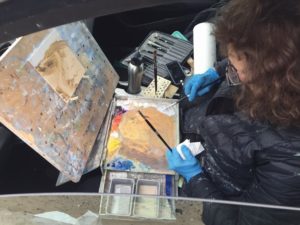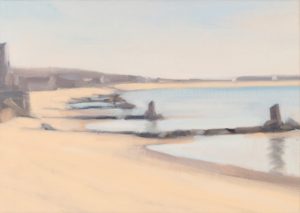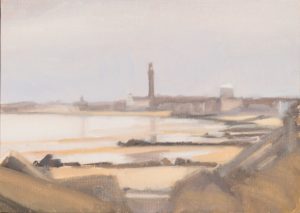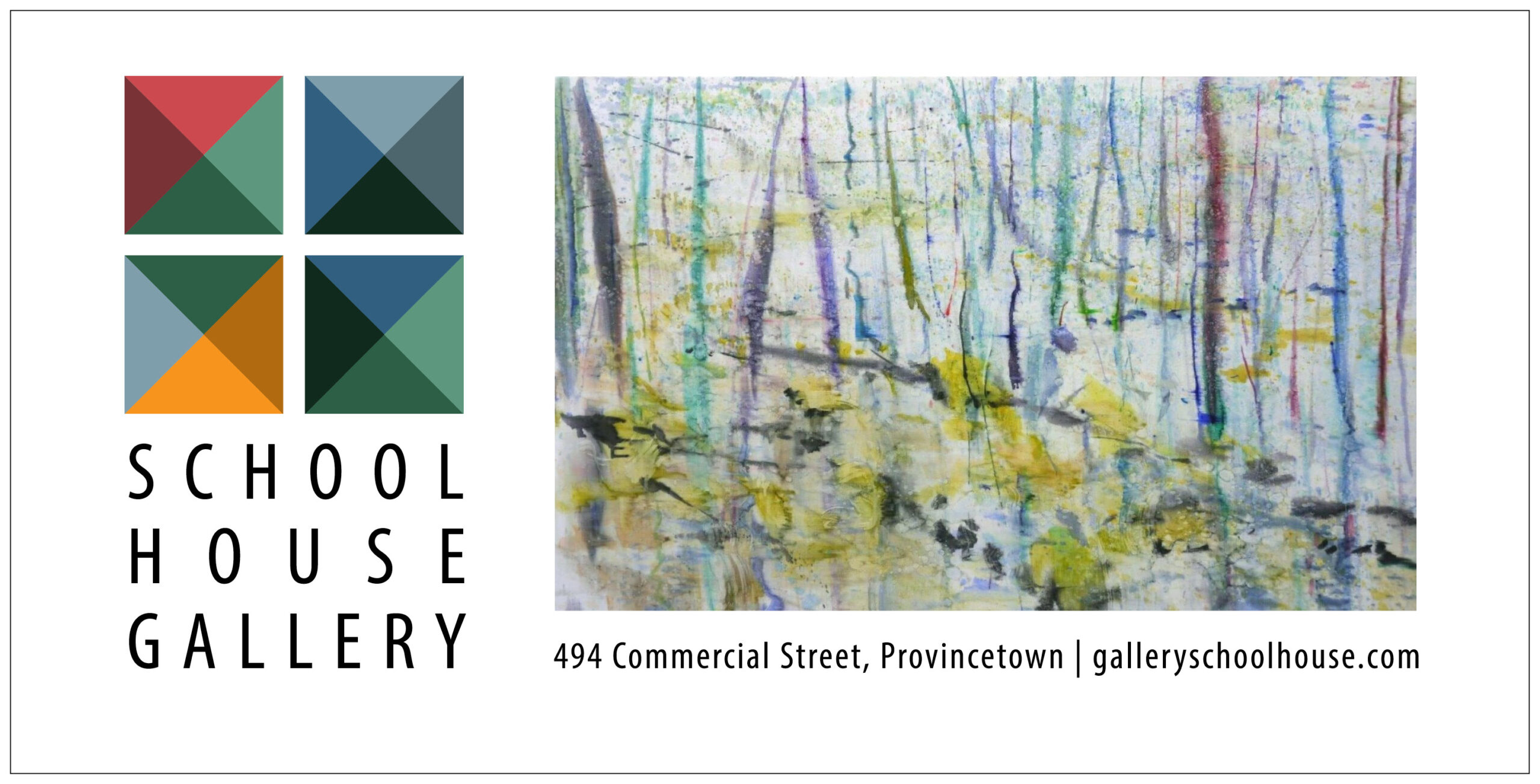Diana Horowitz’s landscape paintings are notable not only for her mastery of technique but also for their size. None of her works has a dimension larger than seven inches; all convey a modesty and intimacy rarely seen in galleries.

Horowitz was known for her large paintings of New York cityscapes. But the scale of her work in a new show at the Schoolhouse Gallery in Provincetown reflects a relatively new direction for the artist.
“It feels kind of against the law,” she says.
Horowitz says she learned to paint under artists — mostly men — who “emphasized that bigger is better.” Enrolled in Brooklyn College’s M.F.A. program, she met and studied with Lois Dodd, who has achieved a sort of cult following for her small paintings on pieces of aluminum flashing. “She gave me courage to do these tiny paintings,” says Horowitz.
Other influences have loomed large in Horowitz’s life. Her mother is Brenda Horowitz, a landscape painter who lives and works on the Outer Cape. For years they agreed that Diana wouldn’t show on the Outer Cape — to avoid confusion. But now that they’re both showing in Provincetown, Diana has a tip for telling them apart: “If the paintings are gray and tiny, they’re mine. If they’re big and colorful, they’re my mother’s.”
Horowitz grew up in New York City and her family spent summers in Provincetown, where she became acquainted with many of the Outer Cape’s most notable painters — she mentions Salvatore del Deo, Arthur Cohen, Selina Trieff, Bob Henry, Paul Resika, and Helen Miranda Wilson, among others. But the sheer amount of talent associated with the Cape Cod landscape tradition made it difficult for Horowitz to find her own space here.

“There are so many artists who have painted the Cape landscape,” says Horowitz. “Instead of seeing the landscape in a fresh way, I would think, ‘That’s a Paul Resika, or an Arthur Cohen, or something my mother would paint.’ ”
Horowitz describes the Outer Cape as an “archetypal landscape” and one of the three places — along with Italy and lower Manhattan — she feels most connected to. But while the latter two have long figured prominently in her art, the Outer Cape began to find its way into her paintings only about five years ago, the result of spending more time here in the off season.
“I connected to the landscape through seeing it in the winter,” says Horowitz. “I could see it in a new way. The color in winter was really exciting. The tones are very close. That tonality touches me in a way.”
Her fascination with narrow tonal ranges is evident in From St. Mary’s, April, a painting of Provincetown Harbor. In a careful calibration of light and dark, a series of jetties in the foreground gradually become lighter as they move deeper into an atmospheric space toward airy architectural forms in the background. The effect is like a slow diminuendo in a musical composition. The flat plane of the light beige sand and the washed-out blue sky similarly rotate around delicate tension points, but here the contrast is between warm and cool.

Like other paintings in the show, From St. Mary’s was created outside, en plein air. She works quickly, often in her car. (The parking situation is another reason she loves the off season. “Oh my God! It opens up a world of possibility,” she says.) But although it takes only an hour or two to create a painting, her eventual body of exhibited work depends on editing: during a two-week period, she may create 15 paintings, from which she might choose only four or five to exhibit.
Last winter she decided to paint the Pilgrim Monument. Ordinarily it wouldn’t have been a subject that appealed to her. “I would never choose a subject like that for a long-term painting,” she says. “It feels too clichéd.”
But the painting turned out to be a keeper. An economy of mark is part of its charm: a white touch of paint on the water tower in the background captures the cool winter light, and broad strokes of paint describing rocks in the foreground contrast with more delicately rendered rocks in the distance, setting up a nuanced play of scale.
In such works, Horowitz has figured out how to find her own place in the Cape landscape tradition as she contends with the influences that surround her.
“Some of those ghosts you’re happy to embrace,” she says. “But you don’t want too many of them hanging over your paintings.”



